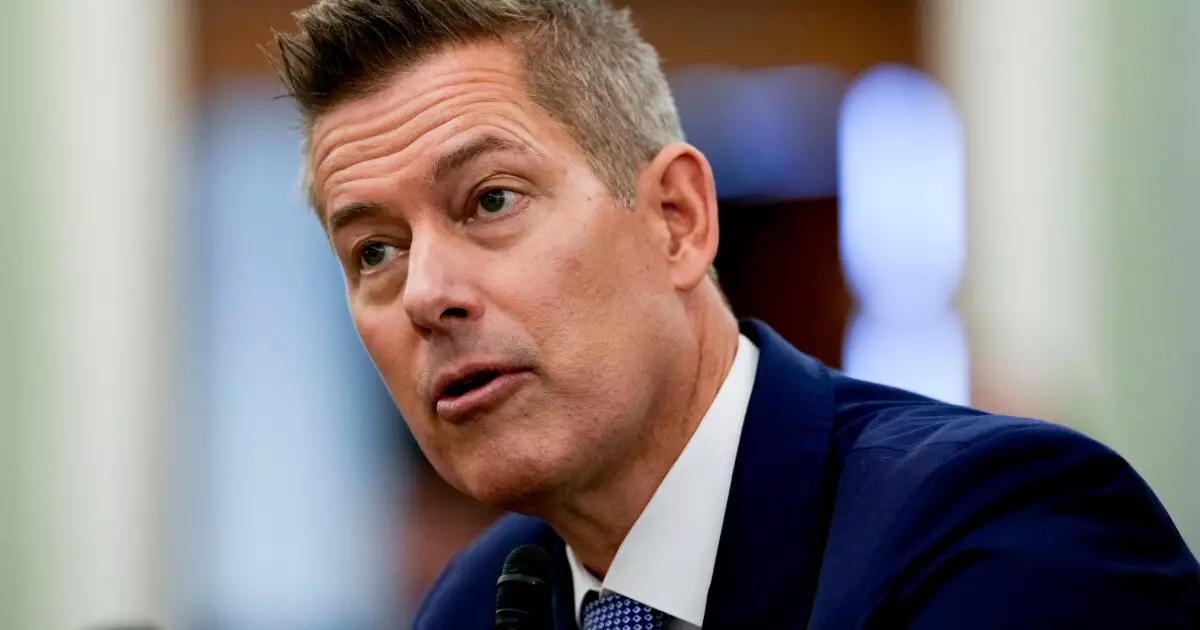As legislation from the Biden administration begins to wane, public transit systems across America are facing an increasingly complex landscape, fraught with regulatory challenges and mounting pressures. The recent communication from U.S. Transportation Secretary Sean Duffy is a clear indication that the federal government is shifting its focus from merely funding to enforcing rigorous safety requirements. This shift isn’t just bureaucratic red tape but a wake-up call emphasizing the paramount importance of maintaining safety and order within transit environments. It’s as though the government has finally realized that for millions of Americans who rely on public transportation, these systems must not only function but do so under a veil of safety and cleanliness.
The Impacts of Legislative Hesitation
In light of the continuing resolution that seeks to ensure that transit funds from the Infrastructure Investment and Jobs Act are still operating, the transit sector’s future is teetering on a precipice. The allocated funding, while a nominal increase of 0.4% from the previous fiscal year, pales in significance when juxtaposed against the overwhelming shortfalls plaguing numerous transit authorities. Take the New York Metropolitan Transportation Authority (NYMTA): the letters from Secretary Duffy underscore that compliance with federal regulations is non-negotiable—and all of this during a time when the NYMTA is desperately scrabbling for funds to meet its baseline operating costs. For cities like New York and Washington, D.C., which are already struggling to keep their transit systems afloat, this added layer of regulatory compliance could be a fatal blow.
Rising Crime and Fare Evasion: A Major Concern
Recent demands to tackle crime rates and fare evasion can be seen as a direct response to the deteriorating conditions throughout public transit systems. While it’s essential to uphold safety within these venues, the manner in which the government is now directing its focus appears somewhat misplaced. Rather than addressing root causes of crime—such as poverty and economic instability—the mandate pressures transit authorities to prioritize superficial measures that may not result in substantial changes. When funding is contingent on a perceived improvement in safety metrics, authorities may resort to knee-jerk reactions, further marginalizing vulnerable populations while alienating regular commuters. This creates a paradoxical environment—one that purports to offer safety yet inadvertently exacerbates social inequalities on our streets and subways.
Fiscally Irresponsible Decisions in Major Cities
Cities designated as sanctuary havens, such as Chicago, are on the brink of financial distress due to delays in federal funding. The outrage is palpable, as millions hang in the balance, particularly for crucial projects like the O’Hare expansion. Such funding halt decisions could potentially derail transformative infrastructure endeavors that might otherwise benefit countless residents. The predicament illustrates an unsettling trend: the shifting priorities of federal funding aren’t always aligned with urban necessities. As we observe these developments unfold, it is frighteningly evident that political jesting can alter the course of essential public projects, leaving city dwellers to manage the fallout.
A New Era of Transit Uncertainty
We find ourselves in a peculiar moment where federal policy appears to navigate unpredictably between sporadic freezes and deregulations. The statements from former officials suggest that not only are existing programs facing existential audits, but new transit projects may also be viewed through a lens of skepticism, when they should instead be embraced as forward-thinking solutions to long-standing issues. Such a volatile atmosphere doesn’t just impede growth; it diminishes public trust in government institutions meant to facilitate societal progress.
As we assess public transit today, it’s crucial for citizens to demand accountability and transparency from both federal and local authorities. The path forward for our public transit systems needs to be bold, courageous, and free of the archaic shackles of partisan rivalry. The sustainability of our urban infrastructure hinges upon how swiftly and decisively we navigate these turbulent waters. The past impeachment of innovation under bureaucratic constraints must not dictate an uncertain future; we owe it to ourselves—indeed, to our cities—to choose a path that prioritizes both safety and accessibility.

